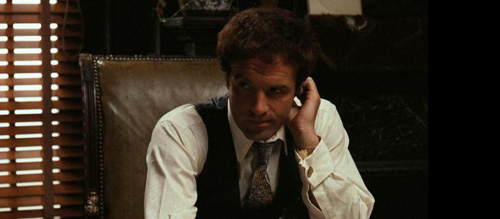‘The Godfather’ at 50 – Review
The Godfather (1972)
Director: Francis Ford Coppola
Screenwriter: Mario Puzo, Francis Ford Coppola
Starring: Marlon Brando, Al Pacino, James Caan, Robert Duvall, Lenny Montana
The Godfather is one of the most significant films in the history of American cinema. The film was popular both critically and commercially, winning three out of ten Oscars at the 45th Academy awards including Best Picture. It tells the story of the Corleones, a New York mob family who follow the old ways of Sicily. Michael Corleone is on the outside of his family – following his time in college, Michael served in World War II. What follows is the tragic downfall of Michael as he slowly rises to the head of the family.
The production process of The Godfather wasn’t entirely smooth. Director Francis Ford Coppola was notoriously difficult to work with, but there’s no question that he was the right man for the job. He adapted the screenplay with the author of the original novel, was essential to getting Marlon Brando on board as the Godfather, Vito Corleone, and brought in family members, illustrating a personal touch. At the same time, he feuded with Paramount, and was forced to work within boundaries he wasn’t used to as a more independent filmmaker. He didn’t receive permission to edit his final cut, and the film became a romanticization of gangsters, a celebration of violence – albeit an endlessly entertaining one. One reason The Godfather Part II is so highly praised is because Coppola got to tell the story his way, all due to the success of The Godfather.
Marlon Brando won Best Actor for this 1972 release, though he declined to accept the award, and was represented by Sacheen Littlefeather, an Apache actress who spoke about the negative treatment of Native Americans in the film industry and American society. Brando is the stand-out performer, famous for making offers people can’t refuse. He shows a range from menacing mobster to playful grandfather, and embodies his character through every stage of the story. Vito is tightly intertwined with the opening wedding scenes, as they provide opportunities for him to show his different sides. He’s a family man who cares for his community, but he’s also a brutal mobster who hangs around with made men like Luca Brasi (Lenny Montana).
Al Pacino, Robert Duvall, and James Caan were each nominated for Best Supporting Actor at the Academy Awards in 1973, but none won. They play Vito’s three sons, Michael, Tom Hagen, and Sonny respectively. Pacino was the star as Michael, and his transformation across the film is played to perfection. Michael’s pivotal scene takes place in the first half of the film, when Michael moves his father’s hospital bed to prevent further attempts against his life. He gets a local baker to stand outside and act as if they’re guards watching over the Don. In those moments, he becomes involved in his family despite trying to stay out of their operations. Tom is the family’s attorney. In one sequence, he’s sent to represent Vito’s interests in California to get a godson a leading role in a Hollywood war movie. The director awakens to find a horse head in his bed when he doesn’t comply, and the godson, Johnny, ends up with the role. Sonny is the hot head of the family. Caan was actually initially hired to play Michael, but this was something Coppola didn’t want. Caan was quoted saying “…he had it in his mind that Michael was the Sicilian-looking one and Sonny was the Americanized version.” Throughout the film, Sonny’s demeanor is exploited, and his story ends when he’s shot in a toll booth, an example of the excessive violence featured in the film.

But the violence is what makes The Godfather so entertaining. If you’re going to glorify violence, the least you can do is incorporate tragedy and character development, and Coppola does so here. It is arguable that scenes like “leave the gun, take the cannoli” are too much, but for the most part the violence is meaningful beyond the spectacle of blood and explosions.
It is notable that the list of female characters is sparse. They’re often shunted to the background, a representation of an archetype rather than an actual character. Vito’s patriarchal perspective reigns supreme, and stands as a symbol of respectability. He’s doing criminal activity the right way, and we’re implored to contrast Vito’s anti-drug ways with Sollozzo’s pro-drug aspirations. This is something Part II improves upon at least a bit, giving Kay (Michael’s partner played by Diane Keaton) an actual amount of intelligence and agency compared to the first film.
The Godfather probably doesn’t have the same social relevance as it once did, but it is a film that many film lovers care about because of its historical relevance. The only thing stopping it from being the first blockbuster is that is came out in March, but it is not so much the film’s success that keeps it relevant as much as it is the success of an American independent auteur. Coppola’s earlier and subsequent films were spaces for him to express creative freedom, in whichever form that took; he pushed the boundaries of what cinema is and could be, and made each film personal to himself. He put the auteur movement into the consciousness of mainstream cinema, and he continues to finance and re-present his own works to this day. The Godfather, like Psycho or The Searchers, is a film that has staying power in the cinephile zeitgeist, and that will maintain its position as one of the greatest American films of all time.
21/24


